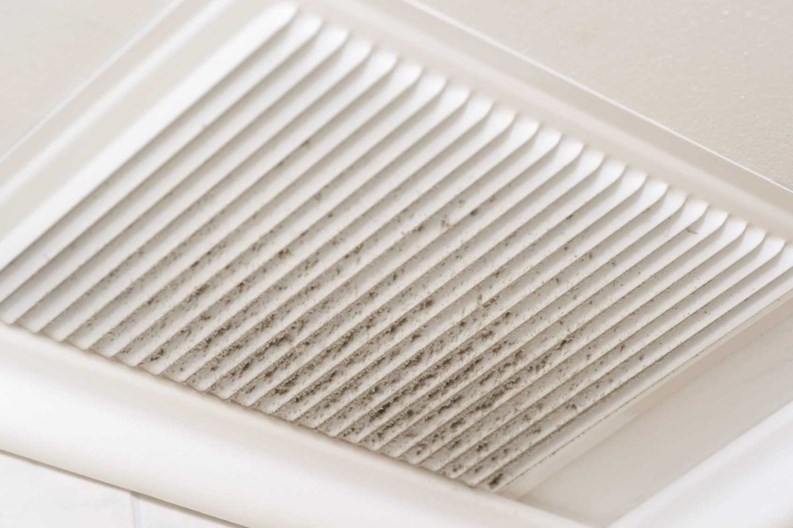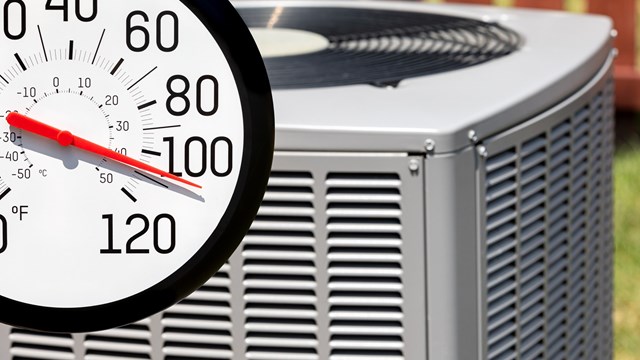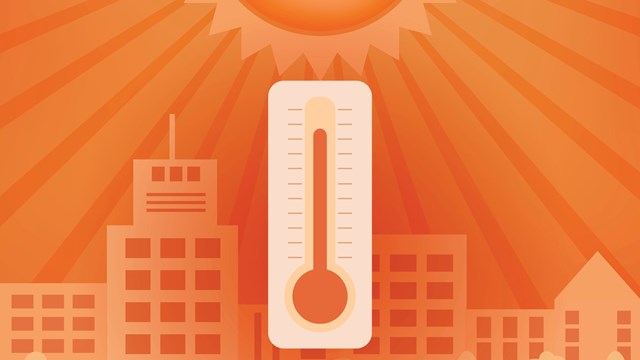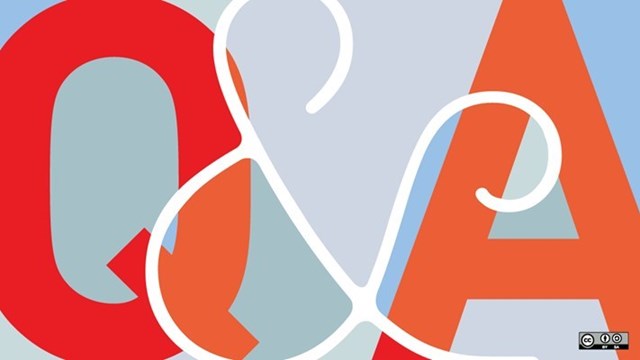Keeping indoor air clean is critical to maintaining a healthy environment. The inner workings of a building’s operating system is often a mystery to the untrained person or board member. Since it’s easier to determine the cleanliness of common rooms such as garbage and recycling areas, more attention is often paid to keeping these shared spaces sanitary. However, there are no federal or state guidelines that require a building to have its air ducts cleaned, for example, and these systems often need attention because danger could be brewing from within.
“Aside from dust and allergens, we have received calls due to bad smells,” says Caesar Romo, air duct supervisor for the Elmhurst-based Quality Air Duct Cleaning. “We have found both dead and live animals. Sometimes kids will hide things in the ducts too; so we have found money and other things stashed away.”
A recent Harvard study showed that 100 percent of homes tested for indoor air pollution had one or more air quality problems. The following facts are not pleasant, but important to note to better underscore potential health issues. There are approximately 42,000 dust mites living in every ounce of dust polluting the air. On average, dust mites leave fecal droppings about 20 times a day. This is but one segment of possible pollutants. Add pet dander and cigarette smoke to the environment and allergens increase three-fold.
“Indoor air is very different than outdoor air,” says Kristy Lee, technical director of Indoor Environment Communications. “Indoor air is not circulating or being refreshed so if there is any kind of problem in a building such as mold or dust or anything like that it becomes an irritant, gets worse and keeps getting circulated throughout the building.”
The Environmental Protection Agency (EPA) finds that there is not enough knowledge currently to determine whether or not air duct cleaning actually prevents health problems. Additionally, studies have not conclusively demonstrated that the levels of particulates in homes increase because of dirty air ducts. However, the EPA does state that “It makes no sense to clean duct-work if air handlers are left untouched. Air ducts deliver exactly what an air handler drives, and if the duct-work is dirty, so are the air handler’s guts.”
Finding the Right Company
Whether a building is new or old, it is difficult to determine exactly how long it takes for debris build up to occur in air ducts and chutes, explains Kyu Chung, president of Arlington Heights-based Air Duct King, Inc. “Over time, dust accumulates within the duct and ventilation systems. Air is pulled from inside your home into the duct systems and filtered. However, not all of the contaminants get cleaned completely, resulting in a buildup within duct systems.”
For many boards, pulling the trigger and hiring a cleaning company is often a last resort spurred by a resident or employee complaining of illness. Most often a building superintendent will conduct sight reviews of the system. The EPA states that “If after a visual inspection of the inside of the ducts, you see no indication that your air ducts are contaminated with large deposits of dust or mold (no musty odor or visible mold growth), having your air ducts cleaned is probably unnecessary.”
Finding the right company is an equal challenge as there are many fly-by-night companies known for doing substandard work and often making matters worse. Any company operating without certification from the National Air Duct Cleaners Association (NADCA) should be considered suspect.
As a way to confront scam artists, NADCA teamed with undercover investigator Chris Hansen and Dateline NBC to expose fraudulent companies. “These scams are a problem for consumers and legitimate businesses alike. The low-price coupons offered by these bad actors make it difficult for consumers to know what to expect, while also luring business away from legitimate companies. Consumers often end up paying more than necessary without getting their money’s worth,” said NADCA executive director John Schulte.
NADCA recommends that commercial consumers ask the following questions: If there is any remediation of mold or other biological contamination does the company have a Ventilation System Mold Remediator (VSMR) on staff? Will the company be assigning an Air Systems Cleaning Specialist (ASCS) to your project that will be responsible for the complete project? Will the contractor provide you with a means to conduct a visual inspection at any time during the cleaning (mirror and flashlight, camera or other remote visual systems)?
Getting Started
Air duct cleaning is a general term because a proper cleaning of an Heating, ventilation and air conditioning system (HVAC) system means all components of the forced air system. So, often the first step is to understand options. “Air duct cleaning,” for example, means all duct-work, vents and grilles, essentially only those components that distribute airflow. By contrast, “air handler” or “HVAC cleaning” includes all of the heating and cooling machinery, but not the duct-work.
“We recommend air duct and dryer vent cleaning every six months or every year,” says Romo. “Some boards like to do it in the fall before winter hits and the heating system is used or other will wait until spring when it’s time for air conditioning.”
Before moving forward, it is recommended to have a building and/or units inspected,” says Brett Kelley of the Wheeling-based Chicago Inspecting Agency. “Residential spaces are held to a higher standard than commercial spaces,” says Kelley. “We start on the exterior then once inside start on the first floor and work our way up.”
Kelley explains inspection tests for lead, mold and radon. “After discussing the results with the customer, we suggest options for permanent remediation. A tailored program is then offered to the customer. Price depends on numerous factors including the number of furnaces, air ducts and square footage of the building but most packages include furnace air filters, which protect against bacteria, fungi, algae, mold, dust mites and radon.
Once the inspection is completed and the contract is signed, Chung reviews what a client can expect. “To start the cleaning process, we gain access for the vacuum hole by creating eight-inch openings into the air ducts. Then, we run our air duct cleaning system and create negative pressure through each duct, cleaning each vent one at a time,” he continued. “Special tools are then inserted into the vents causing dirt and debris to get sucked into our truck mounted holding compartment. The cleaning process may vary from company to company.”
Applying a timetable to duct cleaning is difficult as it depends on the number of units in the building and the condition of the existing environment, explains Romo. Air duct vent cleaning of approximately 25 to 30 units can be completed in one day depending on availability and access to residents’ dwellings. Roof fans and risers can take multiple days.
All buildings, but especially high-rises, have issues with trash chutes. While recommended cleanings are at least once a year, depending on use, problems can arise more frequently. One big issue is fire safety as residents are known to throw away flammables, paint thinner, paint and other items that are not appropriate for the trash chute. There is also the issue of odors that seep into hallways, common rooms and individual units.
Benefits of Being Proactive
While Romo notes that most of his clients are not on retainer, over the last twenty years he has experienced more awareness regarding keeping HVAC systems cleaned and serviced. “Boards do call us at least once a year because they know the importance of getting it done,” he says.
Another cleaning concern is dryer vents which when not properly cleaned can be dangerous. “We will often get calls from condo associations for a bid on cleaning the dryer vents in the entire building,” says Romo. “We do these jobs often and we recommend doing this every six months to increase the efficiency of the dryer and to reduce the risk of fire.”
While dust and debris in air ducts are otherwise easily mitigated, mold is a serious issue requiring experienced technicians, explains Kelley. “Mold remediation can be difficult to diagnose and require complex cleaning setups to remediate completely. Properly identifying the threat, the source, and the mold removal solution requires years of experience and expertise,” he continued. “Most likely our final mold remediation proposal won’t be the cheapest you can find in Chicago. However, we will assure you that it will be the least expensive value for professionally-guaranteed results. We never forget your family’s health is at stake.” Kelley adds that as a remedy for a toxic environment, the government considers mold remediation and mold testing a complete tax write-off.
The removal of mold is a must-do but often without thorough yearly inspections, it is difficult for a board to understand what is actually happening inside the walls of the building. One expert likened an inspection to a chest x-ray of a person’s lung. Often there are no symptoms to major ailments such as lung cancer. The benefits of being proactive are far-reaching, says Chung.
Chung says cleaning air ducts may actually exacerbate residents’ allergies but the situation should only be temporary. Additionally, he adds, cleaning the mechanical components that come along with air duct cleaning, for instance, the air conditioner evaporation coil that allows them to work more efficiently, might even reduce your association’s energy bills.
Poor indoor air quality can be responsible for everything from eye irritation to throat dryness and itchy skin to chronic sinusitis and asthma. So it makes sense to adhere to a preventative maintenance schedule for your air ducts and vents, if not only to save energy, but to help all your residents breathe a little easier when they get home.
W.B. King is a freelance writer and a frequent contributor to The Chicagoland Cooperator.







Leave a Comment